How to clean glasses with an ultrasonic cleaner?
2025-08-21
With the continuous development of technology, ultrasonic cleaners have gradually become indispensable tools in our daily lives, widely used for cleaning various household items. Ultrasonic cleaners can quickly and effectively remove dirt, oil stains, dust, and more from the surface of items. Whether it's jewelry, glasses, dentures, or vinyl records, ultrasonic cleaners offer professional cleaning services for these delicate items.
With the continuous development of technology, ultrasonic cleaners have gradually become indispensable tools in our daily lives, widely used for cleaning various household items. Ultrasonic cleaners can quickly and effectively remove dirt, oil stains, dust, and more from the surface of items. Whether it's jewelry, glasses, dentures, or vinyl records, ultrasonic cleaners offer professional cleaning services for these delicate items. This article will guide you on how to use an ultrasonic cleaner to clean daily items and provide some important considerations and the benefits of regular cleaning.
Working Principle of Ultrasonic Cleaners
Ultrasonic Cleaning
The core principle of an ultrasonic cleaner is the use of high-frequency ultrasonic waves (usually in the range of 20-40 kHz) to generate sound wave vibrations in the liquid. These vibrations create high and low-pressure alternating bubbles in the liquid. When these bubbles collapse, they create powerful micro-explosions. This micro-explosion effect helps to dislodge dirt, oil, dust, and other particles from the surface of the object, completing the cleaning process.
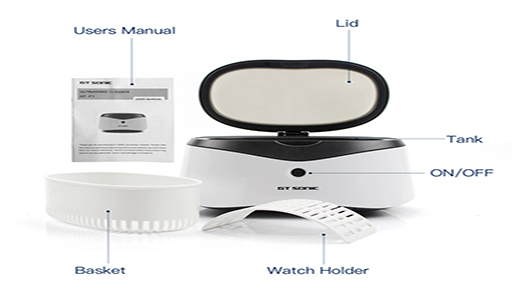
Through this method, ultrasonic cleaning can reach every gap and hard-to-reach area of the object, offering deep cleaning results. Moreover, since ultrasonic cleaning doesn't require excessive chemicals, it prevents surface damage to items, making it a very gentle yet effective cleaning method.
Ultrasonic Cleaner
An ultrasonic cleaning machine consists of a cleaning tank, ultrasonic generator, and heating element. To use, place the item to be cleaned into the cleaning tank, fill the tank with cleaning liquid, and activate the ultrasonic generator to create ultrasonic vibrations. The liquid then forms bubbles that clean the item. Some high-end ultrasonic cleaners are equipped with a temperature control system to enhance the cleaning effect, especially for stubborn stains and oil.
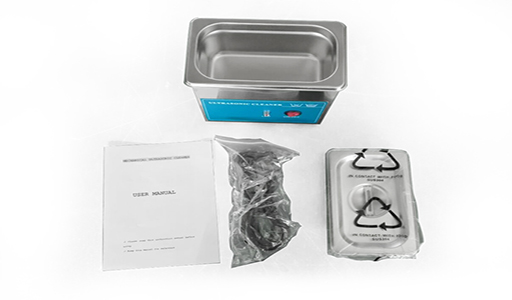
Choosing the Right Ultrasonic Cleaner for Different Items
Different household items have different cleaning needs. Selecting the right ultrasonic cleaner ensures effective cleaning while avoiding potential damage to items. Below are some recommendations for commonly cleaned items:
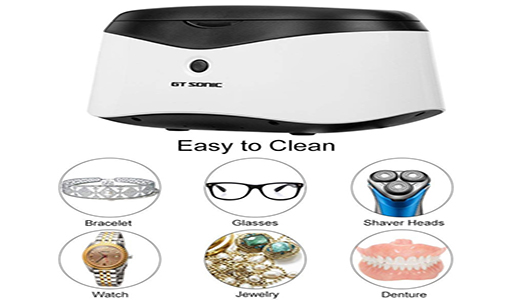
Rings
Rings, as jewelry, often require regular cleaning to maintain their shine. For cleaning rings, it's recommended to use a small-sized ultrasonic cleaner, as these are better suited for cleaning small items. Choose a machine with a deeper cleaning tank to avoid damage from collisions during the cleaning process. Use gentle cleaning liquids, such as jewelry-specific cleaners, which can remove dust and oil without harming precious metals or gemstones.
Dentures
When cleaning dentures and dental appliances, it’s important to use a specialized ultrasonic cleaner, as these items are relatively fragile, and too strong a cleaning force could cause damage. Opt for a cleaner with temperature control, keeping the temperature around 40°C. The ideal frequency for ultrasonic cleaning of dentures is around 35 kHz. For cleaning liquids, use denture-specific cleaners, which effectively remove oral residue and bacteria.
Glasses
The cleaning of glasses mainly involves removing oil stains, dust, and fingerprints from the lenses. When selecting an ultrasonic cleaner for glasses, ensure that the tank is appropriately sized for the glasses. A lower-frequency ultrasonic cleaner (such as 28 kHz) is ideal for glasses as it can remove stains without damaging the lens coatings. For the cleaning liquid, it’s best to use dedicated eyeglass cleaner or mild soapy water, avoiding corrosive cleaning solutions.
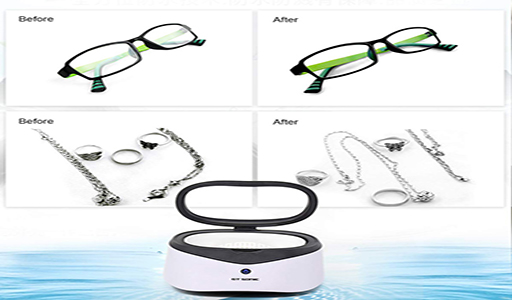
Vinyl Records
Cleaning vinyl records requires a cleaner with higher precision. The surface of vinyl records tends to collect dust and dirt, which can affect the sound quality. Choose an ultrasonic cleaner with a larger tank to fully submerge the record in the cleaning liquid. To avoid scratching the surface of the record, the ultrasonic cleaner should operate at a frequency of 20-25 kHz. For cleaning liquids, use special vinyl record cleaning solutions, avoiding liquids containing strong acids or alkalis.
Precautions When Using an Ultrasonic Cleaner
What Liquid to Use in an Ultrasonic Cleaner
Selecting the right cleaning liquid is crucial when using an ultrasonic cleaner. Different items require different cleaning liquids. Generally, jewelry, glasses, and dentures can be cleaned using specialized, mild cleaning liquids. For more stubborn stains (such as oil stains or paint), you may opt for solvents with grease-removal properties, but avoid using harsh chemicals that might damage the items’ surfaces.
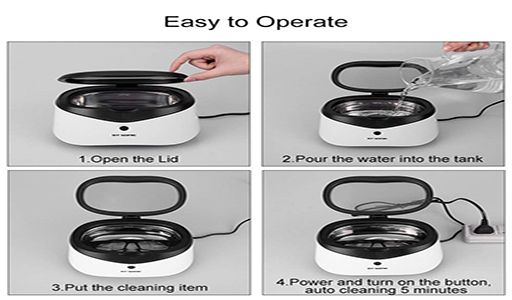
What Not to Put in an Ultrasonic Cleaner
Not all items are suitable for ultrasonic cleaning. Avoid placing the following items into the cleaner:
Valuable Jewelry: Certain gemstones or settings may be affected by the ultrasonic vibrations, causing the stones to loosen or fall out.
Plastic Items: Some plastic items may deform or get damaged during ultrasonic cleaning, especially transparent plastics.
Electronic Devices: Ultrasonic cleaning can potentially damage delicate electronic devices, such as phones or cameras, particularly their internal circuits.
Precious Metals or Plated Items: Some precious metals or items with coatings may experience wear and tear or coating loss due to frequent ultrasonic cleaning.
How to Clean the Ultrasonic Cleaner
Regularly cleaning the ultrasonic cleaner is important to ensure its long-term efficiency. Follow these steps:
Empty the Tank: After each use, pour out the cleaning liquid.
Clean the Tank: Use mild soapy water or a special cleaner to clean the tank’s interior, removing any residue or liquid.
Clean the Ultrasonic Generator: Gently wipe the surface of the ultrasonic generator to prevent dust buildup, ensuring proper operation.
Dry Thoroughly: After cleaning, make sure the cleaner is completely dry to avoid any moisture-related damage.
Benefits of Regular Cleaning
Regular use of an ultrasonic cleaner to clean daily items offers several notable benefits:
Extends the Life of Items
Regular cleaning effectively removes dirt, oil, and other build-ups on items’ surfaces. If left untreated, these substances can accelerate wear and corrosion, shortening the lifespan of items. For example, regular cleaning of glasses and rings not only maintains their appearance but also prevents the surface from oxidizing or sustaining damage.
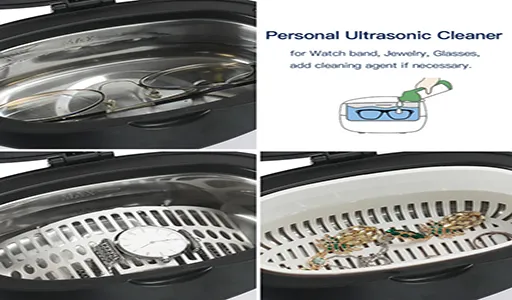
Maintains the Best Appearance and Functionality
Ultrasonic cleaning helps to remove minute dirt particles, restoring the shine of items. For instance, cleaning dentures and glasses improves clarity and comfort, while rings can regain their original sparkle. Regular cleaning ensures that items function at their best, such as removing dust, oil stains, or fingerprints from glasses for clearer vision.
Improves Hygiene and Health
Cleaning dentures, oral appliances, and other everyday items regularly helps maintain oral hygiene and reduce bacteria build-up, which lowers the risk of gum disease or bad breath. Regular cleaning of rings and other items also helps eliminate hidden bacteria on the surface or in the gaps.
Removes Hard-to-Clean Bacteria and Viruses
Ultrasonic cleaning can penetrate small gaps on the surface of items, removing tiny dirt particles and bacteria that traditional cleaning methods can’t reach. Especially during periods of heightened health concerns, such as a pandemic, regular cleaning of daily-used items (like glasses, phones, and headphones) helps reduce the spread of viruses and bacteria, ensuring the health of household members.
Enhances Comfort
Cleaning glasses and dentures eliminates discomfort caused by dirt or bacteria buildup. After cleaning, glasses become clearer, and dentures feel more comfortable to wear, improving the overall daily experience.
Ultrasonic cleaners are efficient, convenient tools suitable for cleaning various household items. By choosing the appropriate device and cleaning solution, and using the cleaner properly, you can maintain your items in like-new condition while avoiding damage. With its advanced technology and versatile design, the GTSONIC ultrasonic cleaner provides professional cleaning services for different items, making it an essential cleaning tool for both home and office environments.











